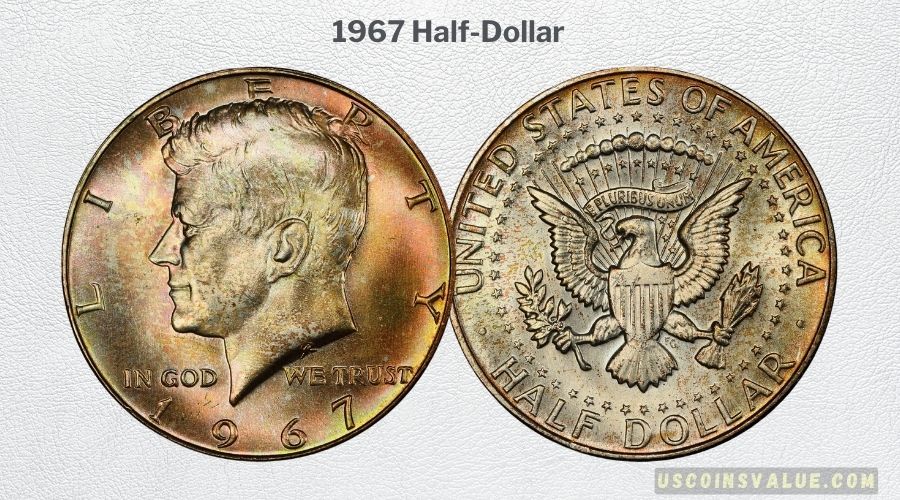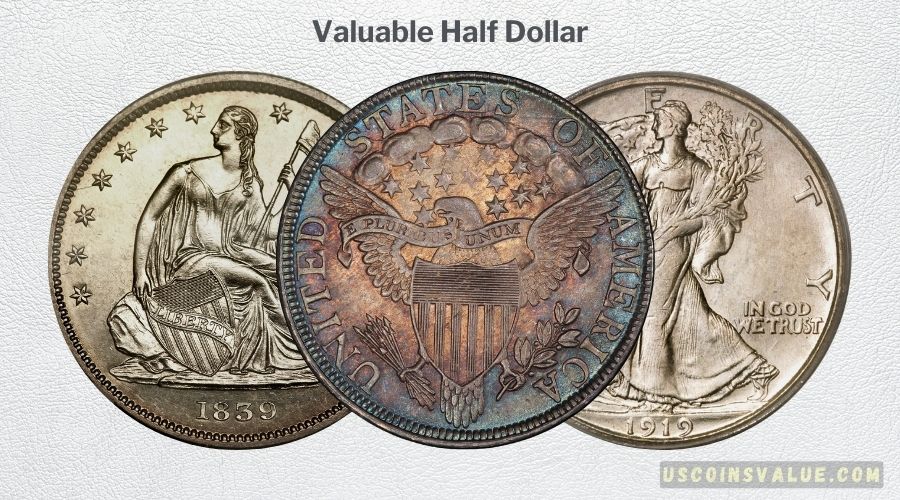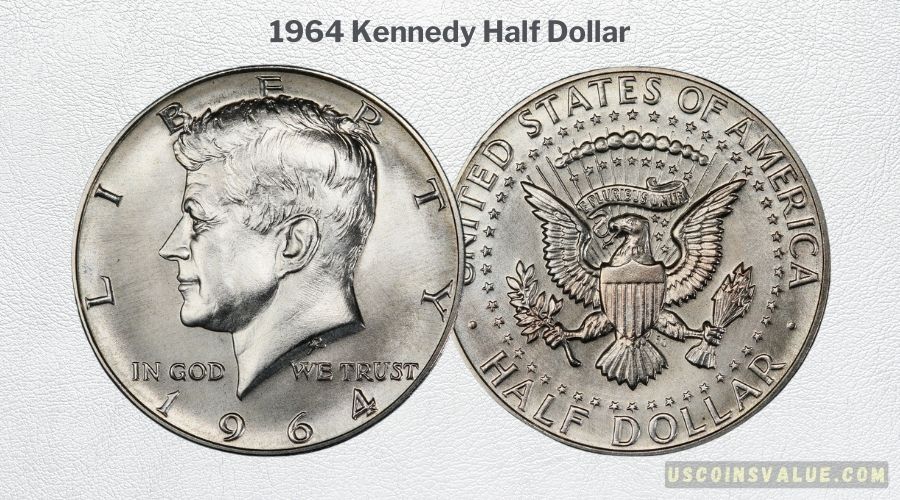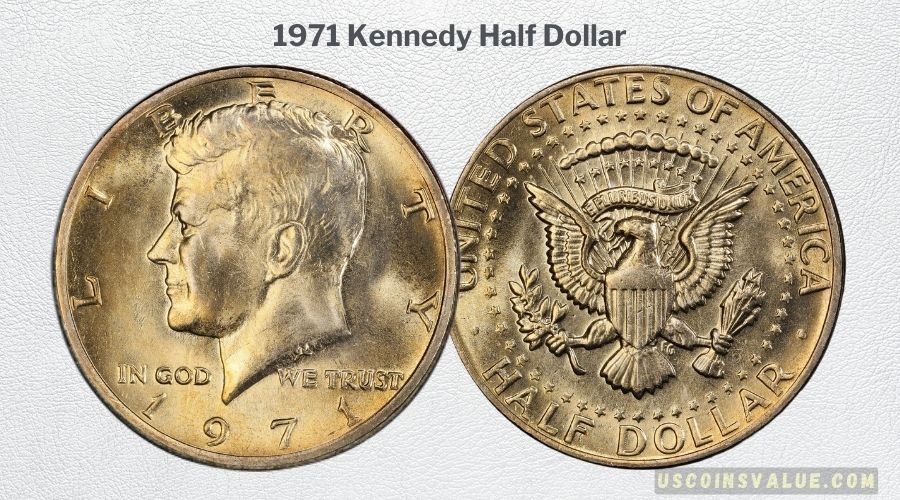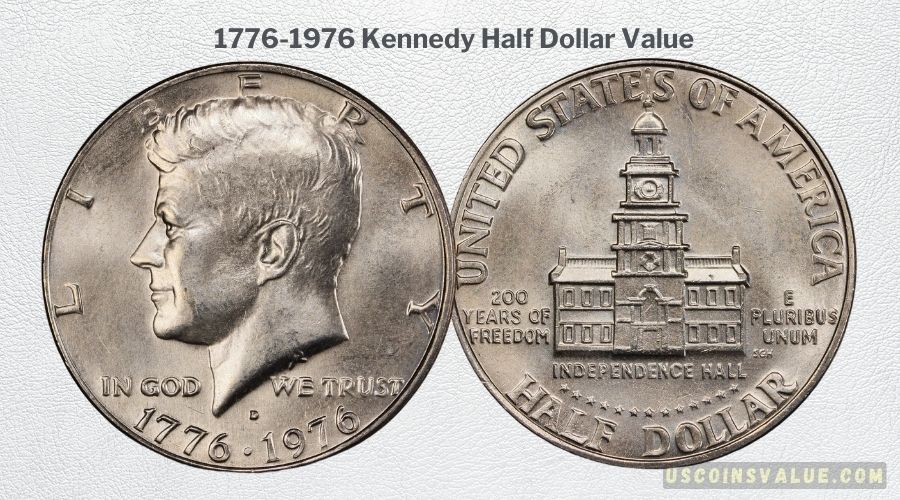The half-dollar is a 50-cent U.S. coin with a face value of $0.50, weighing 11.34 grams, 30.61 mm diameter, and 150 reeds on the edge. Since 1964, the front has featured the iconic John F. Kennedy portrait, and the reverse depicts the Presidential Seal.
History
The half dollar’s journey began in 1794, authorized by the Coinage Act of 1792.
Here is every type of half-dollar coin ever minted in the United States:
- Flowing Hair Half Dollar (1794–1795): The Obverse features Liberty with her hair flowing, while the reverse showcases an eagle encircled by a wreath.
- Draped Bust Half Dollar (1796–1807): The obverse displays Liberty with flowing hair and a drapery covering the neckline. The reverse features an eagle with a shield on its breast.
- Capped Bust Half Dollar (1807–1839): Liberty donning a cap on the obverse and an eagle resting on an olive branch on the reverse.
- Liberty Seated Half Dollar (1839–1891): Liberty seated on a rock on the obverse and an eagle resting on an olive branch on the reverse.
- Barber Half Dollar (1892–1915): Liberty is wearing a Phrygian cap on the obverse and a heraldic eagle on the reverse, holding arrows and an olive branch.
- Walking Liberty Half Dollar (1916–1947): The obverse features Liberty holding olive branches and striding toward the sun, while the reverse displays an eagle standing on a mountain.
- Franklin Half Dollar (1948–1963): The obverse depicts Benjamin Franklin, and the reverse showcases the Liberty Bell with a small eagle on the right.
- Kennedy Half Dollar (1964 to Date): The coin features President John F. Kennedy on the obverse while the reverse displays an eagle with a shield on its breasts, holding an olive branch on its left foot and 13 arrows on its right.
Please note that this list does not include commemorative coins like the Silver 1946 Booker T Washington Commemorative Half Dollars.
Composition
The half-dollar was initially struck in 90% silver and 10% copper.
The silver content was slightly reduced in 1965 to 40% (60% copper, 40& silver), and this remained constant till 1971, when silver was omitted entirely in favor of clad copper-nickel composition half-dollars comprising 91.67% copper and 8.33% nickel.
Value of Half-Dollar Coins Today
Unlike the pennies, nickels, dimes, and quarters, the half-dollar coins are no longer used in everyday commerce. Since 2002, the U.S. Mint has only made half-dollars as a collectible item, selling them directly to collectors without including them in daily circulation.
The value of half-dollars in the collector’s market mainly depends on age, rarity, and condition.
For example, the most valuable half-dollars with the highest recorded sales are the 1797 Draped Bust Half Dollar (15 Stars Variety), worth more than $1,000,000; the 1796 Draped Bust Half Dollar (16 Stars Variety), worth more than $600,000, and the 1838-O Capped Bust Half Dollar worth more than $500,000.
Please read our detailed half-dollar coin page, where we cover all types of half-dollars from each year, diving into their designs, errors, value, and current trends in the market.

